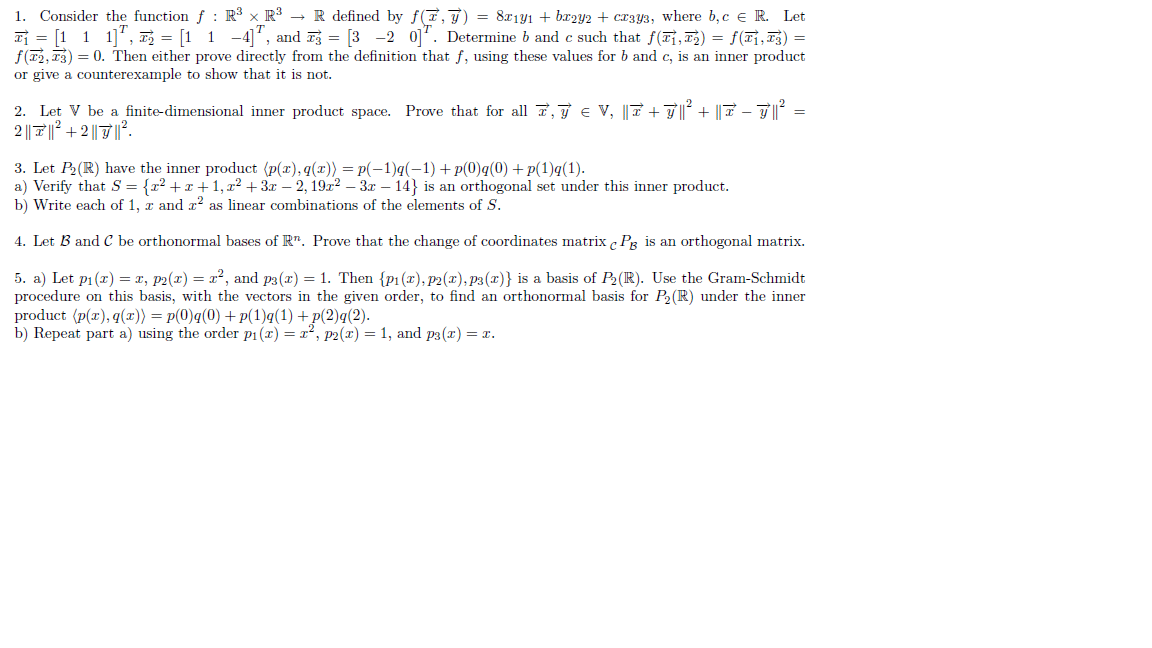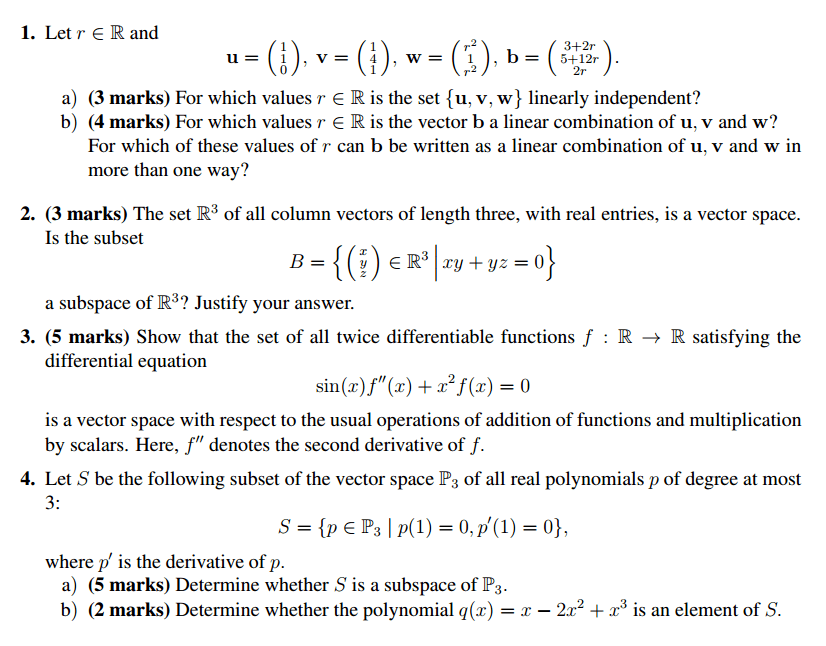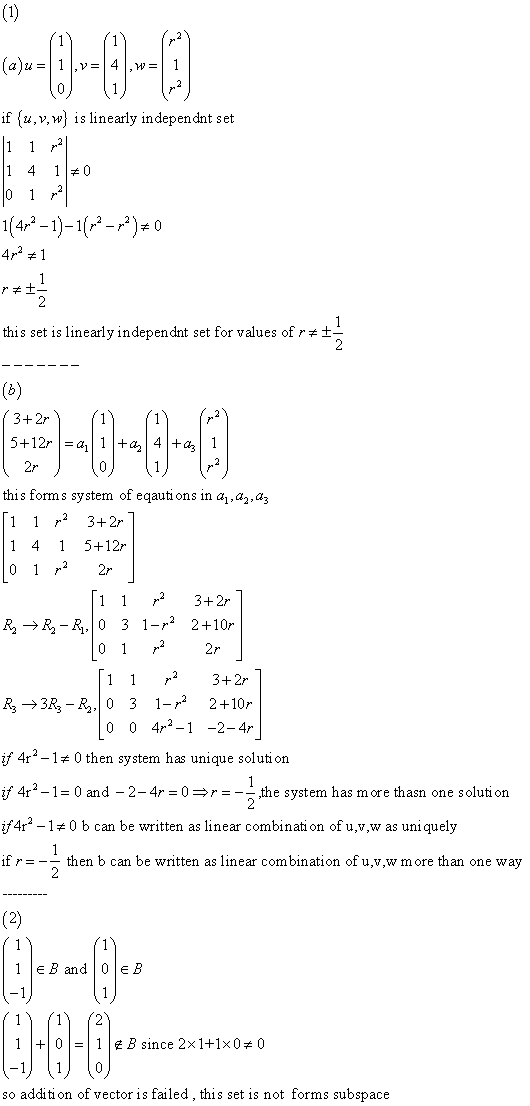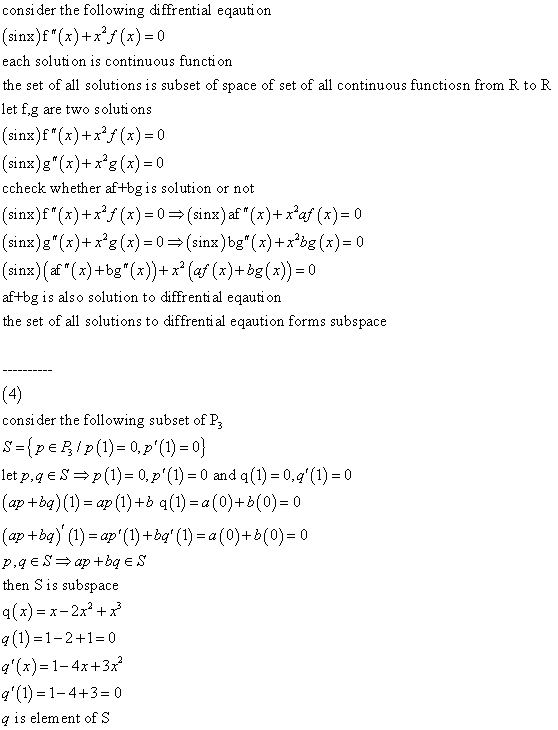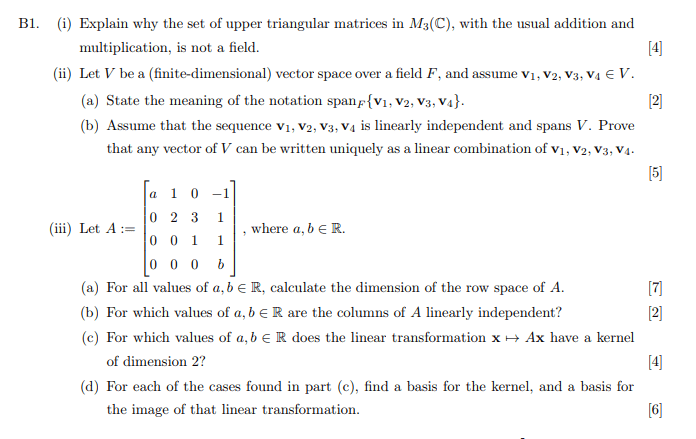2. Is there a linear transformation T : R 3 â R 2 such that T(1, 0, 2) = (1, 1) and T(1, â1, 4) = (2, 2)? Justify your answer.
3. For this question consider: P : R 2 â R 2 given by orthogonal projection onto the line y = 3x and S : R 2 â R 2 given by rotation anti-clockwise about the origin by an angle of Ï/2 .
(a) Using geometric arguments, determine the image of each of the maps P, S, P ⦠S and S ⦠P.
(b) Using geometric arguments, determine the kernel of each of the maps P, S, P ⦠S and S ⦠P.
(c) Find the standard matrix representation of each of the maps of part (a).
(d) Calculate the null space of each of these matrices.
(e) Calculate the row space of each of these matrices.
(f) Calculate the column space of each of these matrices. (g) For each of your answers in (d), (e) and (f), make the connection with the relevant geometric statement.
2. Is there a linear transformation T : R 3 â R 2 such that T(1, 0, 2) = (1, 1) and T(1, â1, 4) = (2, 2)? Justify your answer.
3. For this question consider: P : R 2 â R 2 given by orthogonal projection onto the line y = 3x and S : R 2 â R 2 given by rotation anti-clockwise about the origin by an angle of Ï/2 .
(a) Using geometric arguments, determine the image of each of the maps P, S, P ⦠S and S ⦠P.
(b) Using geometric arguments, determine the kernel of each of the maps P, S, P ⦠S and S ⦠P.
(c) Find the standard matrix representation of each of the maps of part (a).
(d) Calculate the null space of each of these matrices.
(e) Calculate the row space of each of these matrices.
(f) Calculate the column space of each of these matrices. (g) For each of your answers in (d), (e) and (f), make the connection with the relevant geometric statement.
